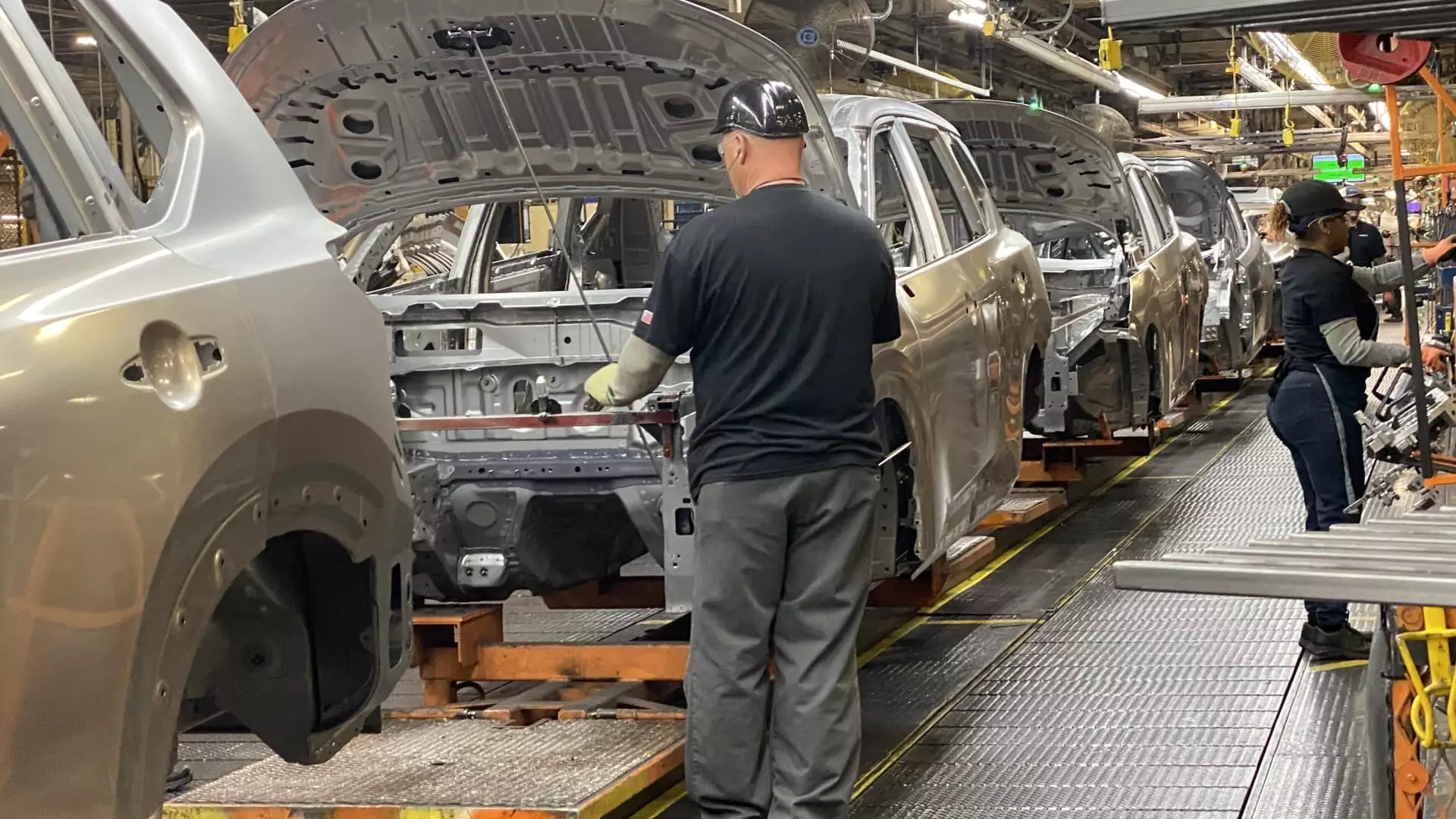The ongoing tariffs imposed by former President Donald Trump on imported vehicles and auto parts have made waves in the automotive industry, generating a mixture of anxiety and opportunism. As these levies linger, the repercussions will not remain contained within the automotive sector; they will ripple through the global economy. This article delves into the significant implications of these tariffs, which are already rearing their ugly head, with predicted declines in vehicle sales and skyrocketing costs that will squeeze consumers and manufacturers alike.
Tariff Stimulation: The Beginning of Economic Disruption
President Trump’s 25% tariffs have taken center stage, destabilizing what was already a vulnerable automotive market. Analysts estimate an astounding $110 billion to $160 billion in additional costs to the industry annually, with the effect of these tariffs extending far beyond mere vehicle imports. Companies like General Motors, Ford, and Stellantis are witnessing burgeoning expenses estimated at $41.9 billion, wreaking havoc on their financial models and setting the stage for widespread layoffs and reduced production. It would be naive to think that these costs would not be passed on to consumers—the very people who have been squeezed by inflation and rising interest rates.
The structural shifts prompted by tariffs will not only affect domestic car makers but also foreign competitors. Companies like Toyota and Volkswagen, which have heavily invested in manufacturing plants in North America, must now decide whether to absorb the elevated costs or transfer this burden to consumers. This dilemma showcases how protectionist policies often backfire, harming the very industry they aim to protect.
The Sales Crisis: Why Consumers Are Feeling the Pinch
The imposition of hefty tariffs is expected to see a staggering decline in vehicle sales, with estimates suggesting a reduction of around 2 million units annually in the U.S. and Canada. This figure is not just a statistic; it represents the real economic pain that consumers will experience as prices inflate. Rising costs of vehicles mean that families will have to think twice before making significant purchases, further stifling consumer spending power.
With average vehicle prices nearing $50,000, the ignition of higher finance rates puts automobiles even further out of reach. The situation becomes dire when considering that auto loan rates hover near 9.64% for new cars and almost 15% for used vehicles. The resultant consumer sentiment, which has already soured due to surging inflation, resembles a perfect storm for economic stagnation.
Manufacturers Respond: Innovations Amid Chaos
In response to these sweeping tariff changes, some automakers are scrambling for ways to navigate the turbulent waters. Ford and Stellantis have introduced temporary employee pricing to counteract the impact on their workforce and customer base alike. In contrast, brands like Jaguar Land Rover have opted to cease U.S. shipments, a maneuver that only underscores the desperation felt throughout the industry.
A notable response comes from Hyundai Motor, which has pledged not to raise prices in the immediate future, hoping to alleviate consumer fears. However, such strategies might prove to be mere stopgaps as the inevitable weight of tariffs descends on the supply chain. While short-term maneuvers show a desire to maintain market share, the question remains: how sustainable are these measures in the face of increasing production costs?
The Broader Economic Impact: A Chain Reaction
As the car industry grapples with these tariff-induced challenges, the economic ramifications reach beyond just auto sales. The cascading effects extend into related sectors, impacting employment rates and overall consumer confidence. The decrease in vehicle sales directly correlates to reduced spending in maintenance shops, dealerships, and ancillary services reliant on the thriving auto industry.
This economic nervousness further accelerates a cycle of retraction, where customers are compelled to tighten their belts, and businesses are forced to slow down their growth or, worse, downsize. The automotive landscape is marked by uncertainty, and stakeholders must adapt quickly or risk falling into mediocrity.
Future Considerations: Adaptation or Stagnation?
The voices from industry experts and analysts are almost unanimous: the repercussions of Trump’s tariffs may well mark one of the most consequential years for the automotive industry. Adaptation is essential—companies must innovate and reconsider their operational frameworks not just to survive but to thrive in an increasingly complex marketplace. The question becomes not merely how to weather the storm, but how to emerge stronger on the other side.
As the auto sector navigates these turbulent waters, the way forward remains uncertain. Embracing new technologies, re-evaluating global supply chains, and finding efficiencies in production will be paramount. In this climate, only the most agile companies equipped with foresight and strategic thinking will survive—highlighting the critical intersection of policy, economics, and industrial resilience.

